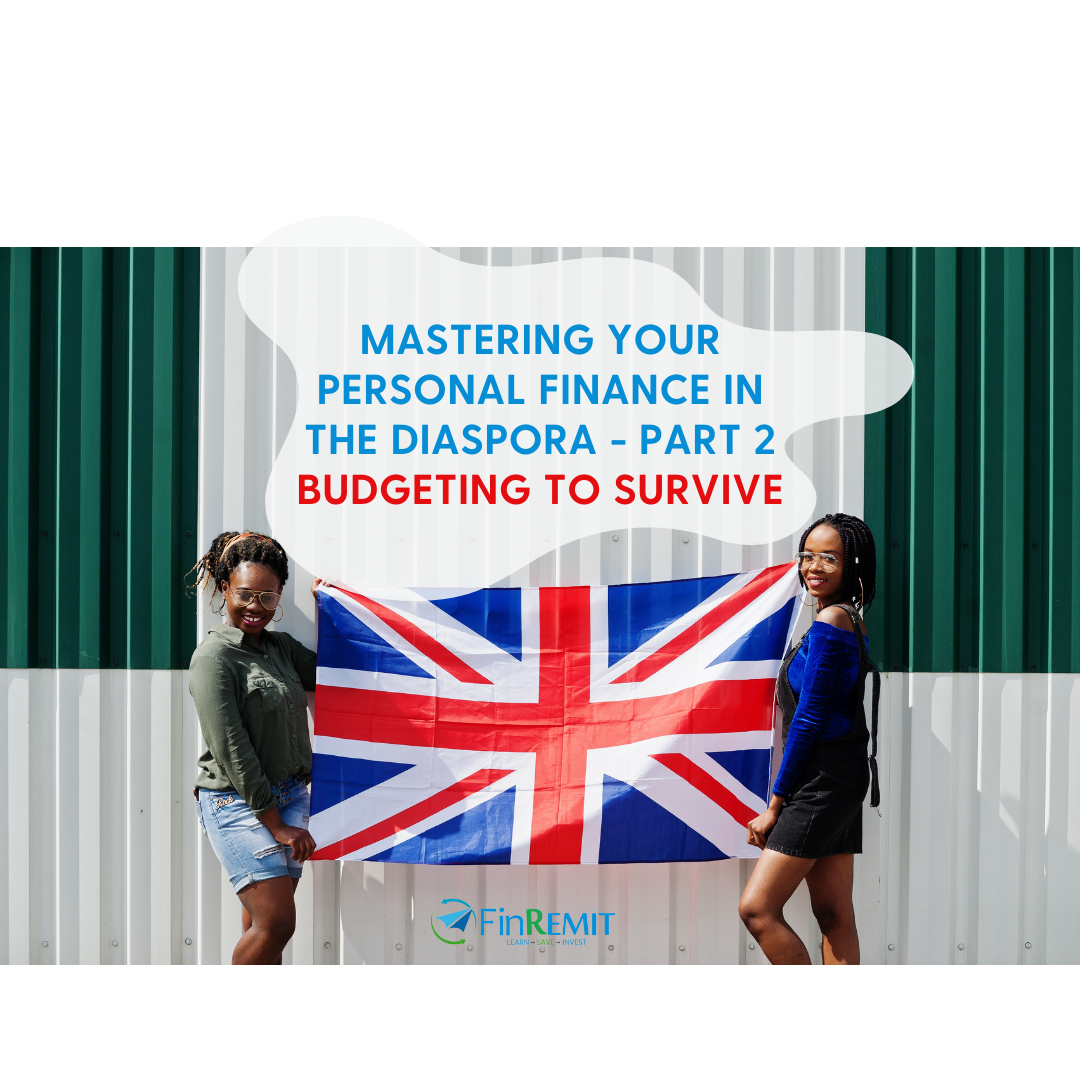Master Your Personal Finance in Diaspora: Budgeting to Survive

Mastering Personal Finances: Budgeting for Shade in the United Kingdom
By FinREMIT
Introduction
Shade and Cynthia, are long-time friends from their university days in Nigeria. When Cynthia invited Shade to join her in the United Kingdom, they both envisioned embarking on a new chapter together. However, upon her arrival, Shade faced the stark reality of financial strain. Having depleted her savings on temporary AirBnB accommodations, she eventually secured a job, earning £2,200 per month. Unfortunately, Cynthia, still a student, resided in a hostel, making it impossible for them to stay together. Shade found an apartment, albeit a costly one, conveniently located just a 10-minute walk from her workplace, with monthly rent at £990. Seeking financial guidance, she approached FinREMIT to learn effective budgeting strategies to navigate her new life in the UK.
Step 1: Understanding the her personal financial landscape
Just as we tell our client, before crafting a budget, Shade needed to assess her current financial situation. She meticulously listed her income sources and tracked every expense. This thorough analysis provided insight into her financial standing, enabling her to identify areas where she could cut costs and allocate resources more efficiently.
Step 2: Applying the 50:30:20 Rule
We normally emphasis the 50:30:20 rule to any new migrants to serves as a practical budgeting framework:
1. Needs (50% of Income):
– Essential expenses like rent, utilities, groceries, transportation, and healthcare fall under this category.
– With a monthly income of £2,200, 50% amounts to £1,100, fully consumed by her £990 monthly rent.
2. Wants (30% of Income):
– Non-essential expenses like dining out, entertainment, hobbies, and personal indulgences are covered here.
– 30% of her income, £660, should be allocated here.
3. Savings and Debt Repayment (20% of Income):
– This category focuses on building savings and repaying debts.
– £440, or 20% of her income, should be directed towards this.
Step 3: Detailed Budget Breakdown
1. Housing and Utilities:
– Rent: £990
– Utilities (electricity, water, internet, etc.): Estimated at £100
Total for Needs: £1,090
2. Groceries and Essentials:
– Groceries: £200
– Transportation: £0
Total for Needs with Adjustments: £1,290
3. Wants:
– Dining out and entertainment: £300
– Personal expenses and leisure activities: £200
– Miscellaneous: £160
Total for Wants: £660
4. Savings and Debt Repayment:
– Emergency fund: £200
– Debt repayment: £100
– Savings for future goals: £140
Total for Savings and Debt Repayment: £440
Step 4: Advise for Cutting Down Expenses
Shade recognized the importance of trimming unnecessary expenses:
1. Groceries:
– Opting for cheaper alternatives and planning meals to minimize waste can help reduce costs.
2. Utilities:
– Energy-saving habits and exploring more cost-effective utility providers can lower expenses.
3. Wants:
– Limiting dining out and seeking out free or low-cost entertainment options can help curb spending.
Step 5: Option for Increasing Income
While managing expenses is crucial, exploring avenues to boost income can significantly enhance Shade’s financial situation:
1. Freelancing or Part-Time Work:
– Utilizing her skills to secure freelance gigs or part-time jobs outside of her main employment can provide additional income.
2. Professional Development:
– Investing in courses or certifications can increase her employability and potentially lead to higher-paying positions.
Step 6: Strategy for Building an Emergency Fund
Building an emergency fund is crucial for financial stability:
1. Start Small:
– Allocating £200 monthly towards the emergency fund until it reaches an optimal level can provide a financial safety net.
2. Automate Savings:
– Setting up automated transfers ensures consistent contributions to savings.
Step 7: Paying Off Debt
Addressing any existing debts should be a priority to avoid accumulating interest charges:
1. Debt Snowball Method:
– Focusing on paying off the smallest debts first while making minimum payments on larger ones can help accelerate debt repayment.
2. Debt Avalanche Method:
– Alternatively, prioritizing debts with the highest interest rates can minimize long-term costs.
Step 8: Long-Term Savings and Investments
Planning for the future is essential:
1. Retirement Savings:
– Considering opening retirement accounts and making regular contributions can secure Shade’s financial future.
2. Investment Opportunities:
– Educating herself on investment options can help grow her wealth over time.
Step 9: Continuous Learning and Adaptation
Mastering personal finances requires ongoing education and adaptation:
1. Continuous Learning:
– Staying informed about financial management through our one-to-one financial education sessions, reading books and articles on www.FinRemit.co.uk, online courses, and seminars is essential.
2. Adaptation:
– Adjusting her financial plan as circumstances evolve ensures Shade stays on track with her goals.
Conclusion
Shade’s transition to life in the United Kingdom presented financial challenges, but with effective budgeting strategies, she can achieve financial stability and success. By understanding her financial landscape, adhering to the 50:30:20 rule, cutting expenses, increasing her income, building an emergency fund, paying off debt, and prioritizing long-term savings and investments, she can master her personal finances. At FinREMIT, we’re dedicated to empowering individuals like Shade with the knowledge and tools they need to build a secure and prosperous future. Remember, financial success is about making informed decisions and continually striving for improvement.


